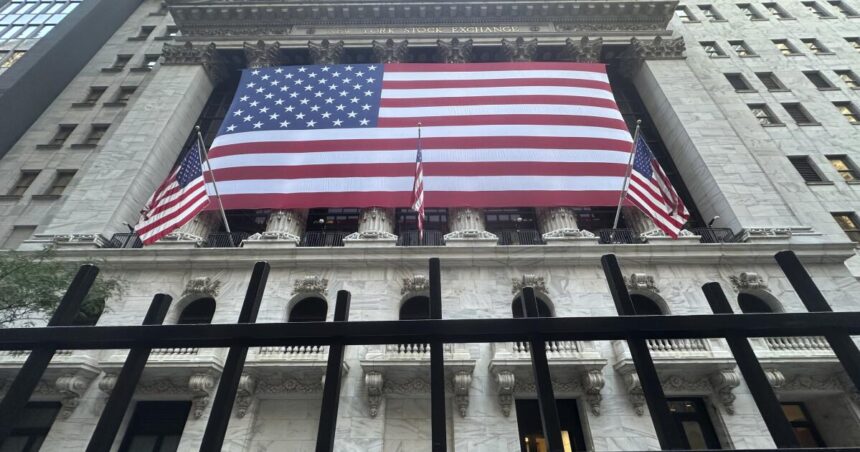U.S. stocks ended mixed on Tuesday after weeks of declines.
The S&P 500 index rose 0.4%, to within 3% of its all-time high recorded in July. It swung between small gains and losses throughout the day, but the moves were unlike anything seen since the summer and were fueled by concerns about whether a sell-off could be prevented.
The Dow Jones Industrial Average fell 0.2%, while the Nasdaq Composite rose 0.8%.
Oracle led the market, soaring 11.4 percent to a record high after its latest quarterly profit and revenue beat analysts’ expectations. Gains in several influential Big Tech stocks also helped lift the index, with Microsoft up 2.1 percent and Amazon up 2.4 percent.
But banks weighed on the market after several executives at an industry conference kept their comments to a minimum.
JPMorgan Chase & Co. slumped 5.2% after its chief executive said analysts’ expectations for fundamental profit metrics may be “too high.” Goldman Sachs slid 4.4% after its CEO said trading revenues are currently trending lower this quarter. And Ally Financial slumped 17.6% after its chief financial officer warned that borrowers are “struggling with high inflation, the cost of living and, more recently, the employment situation.”
Shares of energy producers also slumped as oil prices slumped. A barrel of the international standard, Brent crude, is near its lowest since 2021, and prices have slid amid worries about how much fuel a fragile global economy will burn. That pushed Exxon Mobil Corp. down 3.6% and Chevron Corp. down 1.5%.
Overall, the S&P 500 rose 24.47 points to 5,495.52, the Dow Jones Industrial Average fell 92.63 points to 40,736.96 and the Nasdaq Composite added 141.28 points to 17,025.88.
In the bond market, U.S. Treasury yields fell. The yield on the 10-year Treasury note fell to 3.64 percent from 3.70 percent late on Monday.
Like stocks, U.S. Treasury yields have been volatile ahead of next week’s Federal Reserve meeting, which is fueling expectations it will cut its key interest rate for the first time since the 2020 pandemic-induced crash.
The Fed is shifting its focus away from protecting the economy and toward protecting it. Wall Street debate now centers on how far the Fed will cut the federal funds rate, which is at a 20-year high, and whether its easing ultimately proves to be too late to stave off a recession.
The Fed’s report on inflation due out this week could influence the size of the Fed’s rate cuts. The worst case scenario for the Fed would be for inflation to accelerate again at a time when the job market is struggling, because supporting either requires opposite moves.
But economists expect the latest inflation report on Wednesday to show that U.S. consumer prices rose 2.6% in August from a year earlier, slowing from July’s 2.9% inflation rate.
Up next is a showdown between Vice President Kamala Harris and former President Trump that Bank of America foreign exchange strategists say could be the next catalyst for markets.
In the past, the value of the U.S. dollar has risen against other countries as hopes for Trump’s reelection grew, including in what became known as “Trump trade,” due in part to his calls for tariffs. But economists are debating how policies proposed by either candidate will ultimately affect the economy, and a bigger question may be whether either party will be able to control both Congress and the White House.
Strategists at Wells Fargo Investment Research expect the deadlock to continue, with neither party able to secure a strong enough majority to pass transformative legislation. That’s why “we think the economy is much more likely to drive markets than the election,” said Paul Christopher, head of global investment strategy, and Jennifer Timmerman, investment strategy analyst.
Overseas stocks were mixed in Asia and indexes fell across most of Europe. Hong Kong and Shanghai rose 0.2 percent and 0.3 percent, respectively, after Chinese customs said Chinese exports rose for the fifth straight month on signs of stronger overseas demand.
Cho wrote for The Associated Press.
(Translate tags) Business









